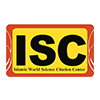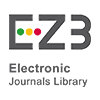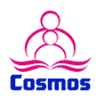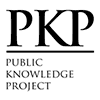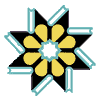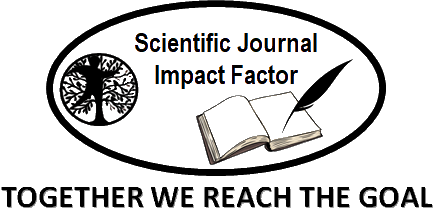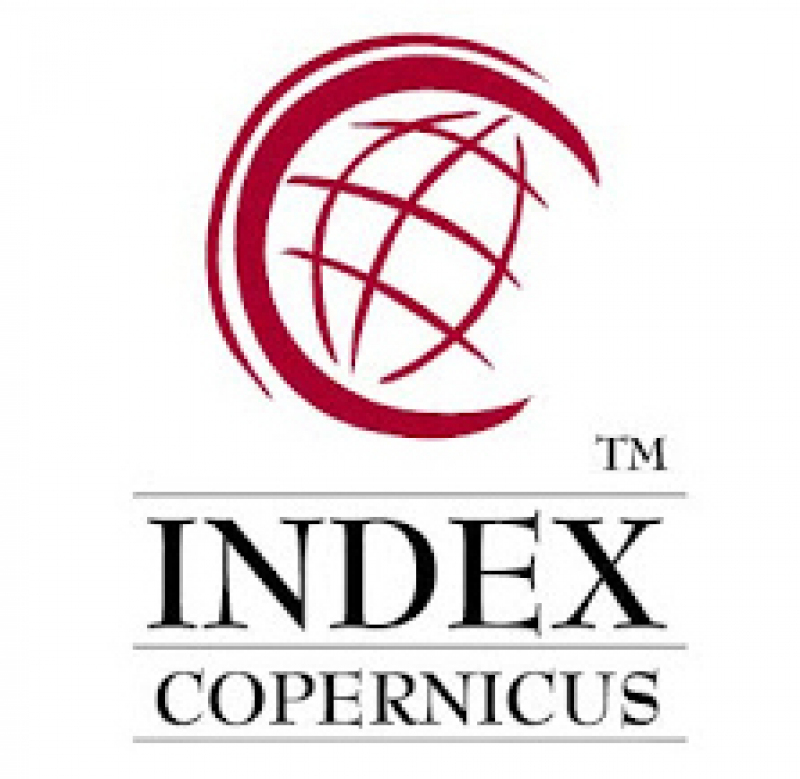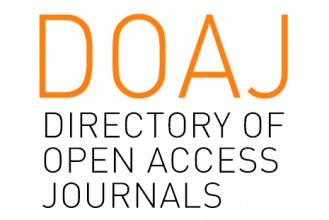The Concept of Islamic Cosmology in the Srabad Banteng-Windu Glass Painting of Cirebon
Abstract
The traditional art of Cirebon reflects a convergence (acculturation) of various cultural elements from different historical traditions. One such example is the Srabad glass painting, which exhibits a cosmological pattern adapted from the pre-Islamic cosmology known as Triloka (Three Worlds). The visual form of the Srabad glass painting combines calligraphic inscriptions with anthropomorphic figures rooted in pre-Islamic mystical traditions. The Srabad Banteng-Windu glass painting, analyzed as a sample in this study, reveals the structure of Triloka cosmology through the use of motifs: the Wadasan motif as an interpretation of the underworld, the hybrid creature Banteng-Windu as an interpretation of the middle world, and the Megamendung motif as an interpretation of the upper world. This article presents a comparative study between Ibn al-‘Arabi’s concept of Islamic cosmology and the concept of the Three Worlds (Triloka) as reflected in the visual structure of the Srabad Banteng-Windu glass painting. The study employs a visual analysis method using a descriptive-interpretative approach, grounded in Islamic cosmology theory. The results indicate that the acculturation of cosmological concepts and visual elements from pre-Islamic traditions into Cirebon’s Islamic traditional arts represents an inward-to-outward adaptation process. That is, after internalizing the teachings of the Sufi order Tarekat Sattariyah, traditional artists expressed their understanding through artworks by borrowing visual elements from earlier, popular artistic traditions in Cirebon.
Keywords
Full Text:
PDFReferences
Açıkgenç, A. (1993). Being and existence in Ṣadrā and Heidegger: a comparative ontology. International Institute of Islamic Thought and Civilization.
Agung, Lingga. (2014): Anasir Sufistik Para Tokoh Panakawan Wayang Golek Purwa Giri Harja 3, Thesis Program Pasca Sarjana, Sekolah Tinggi Seni Indonesia (STSI) Bandung. (Unpublished manuscript).
Ali, M.H. (2021). Philosophical Sufism: An Introduction to the School of Ibn al-'Arabi (1st ed.). Routledge. https://doi.org/10.4324/9781003181040.
Arif, K. M. (2020). Islamic Moderation Concepts in Thought. Millah: Journal of Religious Studies, 19(2), 307–344. https://doi.org/10.20885/millah.vol19.iss2.art6.
Audric, T. (2022) A brief history of Chinese reverse glass painting. In China and the West: Reconsidering Chinese Reverse Glass Painting. https://doi.org/10.1515/9783110711776-018.
Azra, Azyumardi. 2013. Jaringan Ulama Timur Tengah dan Kepulauan Nusantara Abad XVII dan XVIII. Depok: Penerbit Prenadamedia Group.
Boedhijono, S. Kusparyati. (2012). Ancient Sculptures of Durga Mahisasuramardini from Bali, Recent Studies in Indonesian Archeology. Editor Edi Sedyawati dan I Wayan Ardika. Delhi : Indira Gandhi National Centre for the Art.
Burckardt, Titus. “The Cosmological Perspective”, in his Mirror of the Intellect, ed. W. Stoddart, Albany, State University of New York Press, N.Y., 1987, pp. 13-16.
Calo, A. (2020). Durgā Mahiṣāsuramardinī in Likely Tantric Buddhist Context from the Northern Indian Subcontinent to 11th-Century Bali. Journal of Buddhist and Hindu Art, Architecture and Archaeology of Ancient to Pramodern Southeast Asia, 1(3), 7–14.
Capra, F. (1996). The Web of Life: A New Scientific Understanding of Living Systems. New York: Anchor Books.
Casta, C., Rohidi, T. R., Triyanto, T., & Karim, A. (2021). Production of Aesthetic Tastes and Creativity Education of Indonesian Glass Painting Artists. Harmonia: Journal of Arts Research and Education, 21(2), 266–277. https://doi.org/10.15294/harmonia.v21i2.30348.
Dewi, A. Kusuma. (2023). Telaah Estetika Paradoks Pada Gunungan Wayang Jawa. VISWA DESIGN: Journal of Design, 3(1), 1–9. https://doi.org/10.59997/vide.v3i1.2282.
Effendi, Ismet Zainal. (2018): Ekspresi Hibbriditas dan Multikulturalisme Imaji Mitos Paksi Naga Liman, Disertasi Program Doktor, Institut Teknologi Bandung. (Unpublished manuscript).
Faiz, M. (2020). Konsep Tasawuf Said Nursi: Implementasi Nilai-Nilai Moderasi Islam. Millah, 19(2), 199–224. https://doi.org/10.20885/millah.vol19.iss2.art2.
Faturrohman, Imam. (2002) “Lukisan Kaca Cirebon, Konfigurasi Estetis Multi Dimensi”. Buletin Al-Turas, Fakultas Adab and Humaniora, Universitas Islam Negeri (UIN) Syarif Hidayatullah Jakarta.
Febriyanti, A., & Ayundasari, L. (2021). Strategi Sunan Bonang melalui media seni dalam penyebaran dakwah Islam. Jurnal Integrasi Dan Harmoni Inovatif Ilmu-Ilmu Sosial (JIHI3S), 1(6), 688–694. https://doi.org/10.17977/um063v1i6p688-694.
Fischer, J. (1994) The Folk Art of Java. In Oxford University Press (1st ed., Vol. 1). Oxford University Press.
Gaputra, A. D. (2020). Acculturation elements on Sang Cipta Rasa and Panjunan Red Mosque. Journal of Islamic Architecture, 6(2), 119–126. https://doi.org/10.18860/jia.v6i2.8128.
Hasyim, Raffan Safari. (n.d.) Mitologi Lukisan Kaca Cirebon. Kabupaten Cirebon, Dinas Kebudayaan, Pariwisata, Pemuda dan Olahraga. (Unpublished manuscript).
Harding, K. (1993). Causality Then and Now: Al Ghazali and Quantum Theory. American Journal of Islam and Society, 10(2), 165–177. https://doi.org/10.35632/ajis.v10i2.2505.
Hoadley, M. C. (1988). Javanese, Peranakan, and Chinese Elites in Cirebon: Changing Ethnic Boundaries. The Journal of Asian Studies, 47(3), 503–517. https://doi.org/10.2307/2056972.
Idris, Saifullah. (2015). Kosmologi Seyyed Hossein Nasr (Tinjauan Metafisika). 10.13140/RG.2.1.1360.2005.
Jannah, I. N., Rodliyah, & Usriyah, L. (2023). Cultural Transformation in Religious Activities Based on Ahlussunnah Wal Jama’ah Values in Islamic Boarding Schools. Nazhruna: Jurnal Pendidikan Islam, 6(2), 306–320. https://doi.org/10.31538/nzh.v6i2.3404.
Koesoemadinata, Moh. Isa Pramana. (2007) Tasawuf Dan Perupaan Pada Wayang Kulit Purwa Cirebon Dan Surakarta, Thesis Program Magister, Bandung Institute of Technology. (Unpublished manuscript).
Lings, M. (1975). What is Sufism? University of California Press. https://books.google.co.id /books?id=vTlRYfcwnK4C.
Miles, M., Chapman, Y., Francis, K., & Taylor, B. (2013). Exploring Heideggerian hermeneutic phenomenology: A perfect fit for midwifery research. Women and Birth, 26(4), 273–276. https://doi.org/10.1016/j.wombi.2013.06.003.
Nasr, Seyyed Hossein., (1968). Science and Civilization in Islam. Cambridge: Harvard Univ. Press.
Nasr, Seyyed Hossein., (1976). Islamic Science, An Illustrated Study. Westerham: World of Islam Festival.
Nasr, Seyyed Hossein. 1978. An Introduction to Cosmological Doctrine, Great Britain: Thames dan Hudson.
Nasr, Seyyed Hossein. (1987). “The Cosmos and the Natural Order”, in S. H. Nasr (ed.), Islamic Spirituality: Foundations, New York, Crossroad Publications, 1987, pp. 345–357. https://doi.org/10.4324/9781315888200.
Nasr, Seyyed Hossein. (n.d.), Cosmology, in Science and Technology in Islam, no publisher, https://traditionalhikma.com/wp-content/uploads/2015/02/Cosmology-by-Seyyed-Hossein-Nasr.pdf. (Accessed in 6 April, 2025).
Nugraha, A. (2012). Transforming Tradition: A Method for Maintaining Tradition in a Craft and Design Context. Aalto University, School of Arts, Design and Architecture. https://books.google.co.id/ books?id=O6KhMwEACAAJ.
Nursanty, E., & Susilowati, I. (2024). Cultural Uniqueness and the Power. 28, 3–20.
Muhaimin, A. G. (2006). The Islamic Traditions of Cirebon: Ibadat and Adat Among Javanese Muslims. ANU Press. http://www.jstor.org/stable/j.ctt2jbkqk (accessed 16 Desember 2022).
Payandeh, M., Hariri, A., & Hakim, N. (2024). Analyzing Spiritual Messages in the Geometric and Numeric Patterns of Sheikh Lotfollah Mosque Based on Islamic Cosmology. Journal of Islamic Architecture, 8(2), 295–305. https://doi.org/10.18860/jia.v8i2.26516.
Raden, A. Z. M., Sukarwo, W., & Andrijanto, M. S. (2021). Anthropomorphic Arabic Calligraphy: The Elements of Srabad in Cirebon. 512(Icoflex 2019), 47–51. https://doi.org/10.2991/ assehr.k.201230.010.
Rasol, D. R. R. (2017). “The Reaction of Theologians to The Raised Challenges from Ptolemaic System”, Kalam Islami, Vol. 26, No. 103, pp. 129-145, 2017.
Rosidin, D. N., Bakri, S., & Saputra, M. F. (2025). Upholding Religious Moderation through Local History and Culture : A Learning from Cirebon and Surakarta, Indonesia. International Journal of Multicultural and Multireligious Understanding, 12(04), 1–13. http://dx.doi.org/10.18415 /ijmmu.v12i4.6665.
Samuel, J. (2022) China and its south: Chinese ladies on glass and other topics in nineteenth- and twentieth-century Java and Bali. In China and the West: Reconsidering Chinese Reverse Glass Painting. https://doi.org/10.1515/9783110711776-017.
Samuel, J. (2023) Représentations javanaises sous verre des Lieux saints de l’islam : des modèles orientaux aux reformulations locales. In Archipel (Issue 104). https://doi.org/10.4000/archipel.3031.
Sumardjo, Jakob. (2006) Estetika Paradoks, Bandung, Sunan Ambu Press.
van der Poel, R. (2022) Eighteenth-century Chinese reverse glass paintings in a Dutch collection: Art and commodity. In China and the West: Reconsidering Chinese Reverse Glass Painting. https://doi.org/10.1515/9783110711776-016.
Waluyo, E. H. (2006) Lukisan Kaca Cirebon dari Masa Awal Hingga Kini (R.M. Soedarsono (ed.); 1st ed.). P4ST.
Widiana, N. (2016). PERGUMULAN ISLAM DENGAN BUDAYA LOKAL Studi Kasus Masyarakat Samin di Dusun Jepang Bojonegoro. Jurnal THEOLOGIA, 26(2), 198–215. https://doi.org/ 10.21580/teo.2015.26.2.428.
Yunanto, Arif. (2019) Aksiologi Lukisan Kaca Srabad Cirebon Relevansinya Terhadap Pendidikan Karakter, Thesis, Program Studi Pendidikan Seni Program Pascasarjana Universitas Negeri Yogyakarta. (Unpublished manuscript).
Video Source
Safari, Achmad Opan, (2018). Lukisan Kaca, Festival Naskah Nusantara IV, Perpustakaan Nasional Republik Indonesia, https://www.youtube.com/watch?v=4zEFHkY8L68 (diakses 21 March, 2025).
Personal Interview
Casta, Dr. (18 March, 2022) Types and Conception of Srabad Glass Painting, Masjid Besar Rumah Sakit Mitra Plumbon, Jl. Raya Plumbon, Kabupaten Cirebon.
Hasyim, Dr. Rafan S. (10 April, 2021) Srabad Banteng Windu Glass Painting Art, Dr. Rafan S. Hasyim Residence, Jl. Panembahan, Plered - Kedawung, Cirebon.
Hilman, Elang Muhammad. (18 April, 2021) Explanation of Srabad and the history of its development so that it became the art of glass painting, Elang Muhammad Hilman Residence, Jl. Merapi No 10, Perumnas, Cirebon.
––––––––––––––––––––––. (19 August, 2021) Search for Srabad Glass Painting Art Artifacts at Kacirebonan Palace, History of Cirebon City and the Wali Songo Council, Keraton Kacirebonan, Jl. Pulasaren, Pekalipan, Kota Cirebon.
Rastika, Kusdono. (20 August, 2021) Cirebonan Glass Painting and Srabad Glass Painting, Vila Gegesik Blok F no 3 & 4, Desa Gegesik Kiπdul, Kecamatan Gegesik, Cirebon.
DOI: http://dx.doi.org/10.18415/ijmmu.v12i6.6789
Refbacks
- There are currently no refbacks.
Copyright (c) 2025 International Journal of Multicultural and Multireligious Understanding

This work is licensed under a Creative Commons Attribution-NonCommercial-NoDerivatives 4.0 International License.
https://ijmmu.com
editor@ijmmu.com
facebook.com/ijmmu
Copyright © 2014-2018 IJMMU. All rights reserved.







